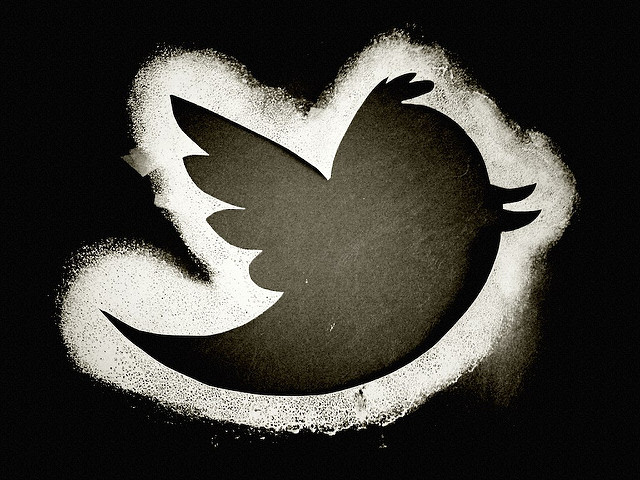Bland, predictable, and unrealistically positive: the Twitter use of candidates during the Scottish Parliament election
Graeme Baxter, Flora Barton and Caroline Hood give their initial impressions of how the parties and candidates used social media during the 2016 Scottish Parliament election campaign.

Credit: Andreas Eldh, CC BY 2.0
Since 2003, researchers in the Department of Information Management at Robert Gordon University have conducted a series of investigations into the use of the Internet by political parties and individual candidates during parliamentary election campaigns in Scotland. A longitudinal overview of the first decade of this research can be found here. Now that the dust has settled on the 2016 campaign, we present our initial impressions of the ways in which the parties and candidates used social media – more specifically, Facebook and Twitter – in the build-up to polling day on 5th May.
Overall, 17 political parties fielded candidates in the 2016 contest. All 17 parties had an official Facebook page, with 15 of these having a distinct, ‘Scottish’ presence. Meanwhile, 15 of the 17 parties operated a Twitter account during the campaign (the exceptions were Solidarity and the Stronger Community Party), with nine of these accounts having a Scottish focus. Unsurprisingly, the number of online followers these sites attracted varied dramatically. For example, by polling day, the SNP’s Facebook page had almost 240,000 ‘likes’, while just 104 individuals had ‘liked’ the Stronger Community Party’s Facebook page.
Of the 609 individual candidates standing in the election, 359 (58.9%) had an active Twitter account, while 321 (52.7%) were operating a Facebook page. This represents a significant increase in candidates’ adoption of social media, compared with that encountered during the previous Scottish Parliament election campaign. Indeed, back in 2011, only one-quarter (25.8%) of contestants had a Facebook page, while just 18.8% were operating a Twitter account. The use of social media, it seems, has become almost de rigueur for the prospective parliamentary candidate. Again, the candidates’ online followings varied widely, ranging from Nicola Sturgeon’s Twitter following of 297,000, to the two individuals who followed the Twitter account of one fringe party hopeful (we will not reveal the candidate’s name, nor their party, to avoid any potential embarrassment).
The extent of the political actors’ activity on social media also varied dramatically. Despite their account profiles highlighting their candidacies or their political allegiances, a number of candidates failed to post any messages at all during the four-week period we studied (2-29 April). In complete contrast, one UKIP candidate was a particularly prolific poster on Twitter, averaging around 86 tweets each day.
While detailed analysis of the traffic on these sites will be carried out in the weeks and the months ahead, our initial impression is that social media continued to be used primarily for the one-way flow of information from the parties and the candidates to their online followers. Although the SNP and the Scottish Greens did hold a small number of live Q&A sessions on Facebook, such examples were uncommon. Generally speaking, there was little evidence of direct, two-way engagement between politicians and the wider electorate, and there was a reluctance amongst the political actors to respond online to contentious policy questions or critical comments posted by the public.
Instead, the engagement that did take place was largely between members of the public, usually in response to a post originally made by a party or candidate. Continuing a trend observed during the 2014 Independence Referendum campaign, these interactions often involved a significant amount of ‘trolling’ by political opponents. As a result, the online conversations, particularly on the larger parties’ Facebook timelines, frequently degenerated into quite vitriolic exchanges involving no little ‘industrial’ language. In this regard, the politicians and party officials appeared to be perfectly content to light the blue touch paper, retire, and observe the ensuing ‘fireworks’ without making any efforts to moderate the online discussions. The one notable exception could be found on the Scottish Liberal Democrats’ Facebook page, where, at the first sign of any perceived aggression or bad language, a moderator would direct the culprit to the party’s Online Community Guidelines.
Some preliminary analysis of the Twitter traffic, conducted using the software Twitonomy, also suggests that the candidates, when compared to their 2011 counterparts, were increasingly unlikely to provide their personal thoughts, opinions and commentaries on political and policy issues. Perhaps influenced by previous, high-profile, online faux pas of other politicians and public figures, the candidates’ Twitter feeds were instead dominated by what we term ‘Secondary Broadcast’ posts, where the politicians simply provided direct links to other online sites, or where they retweeted others’ comments and links. As an added precaution, the Twitter profiles of several candidates included disclaimers similar to that provided by one Conservative candidate:
“Retweets or ‘following’ not indicative of support, approval or endorsement”
Our initial analysis of the candidates’ Twitter accounts has also reaffirmed a pattern identified in our previous studies: that, when discussing their personal campaign activities, politicians’ tweets tend to be rather bland and superficial, often focusing on the weather conditions encountered on the campaign trail, rather than any salient local policy issues discussed by potential voters. As the following extracts of tweets (sent by six different candidates, only two of whom were ultimately elected) also illustrate, many were also unrealistically positive in tone, suggesting that the local electorate was always receptive to their campaign messages:
“Great reception on the doorsteps in sunny Orphir today…”
“Great day on Mull and lively hustings in Craignure…”
“Another great evening of sunshine for campaigning in #Dunfermline…”
“Beautiful day out campaigning in Methil and Buckhaven – more weather like this please…”
“Weather may be cold but warm reception in #Elgin…”
“Lovely night to be knocking on doors at the Quilts…”
If nothing else, then, Twitter reveals the typical Scottish Parliamentary candidate to be an eternal optimist.
Note: This post represents the views of the authors, and does not give the position of Democratic Audit or the London School of Economics. Please read our comments policy before commenting.
 Graeme Baxter is a Research Fellow and part-time Lecturer at Robert Gordon University, Aberdeen.
Graeme Baxter is a Research Fellow and part-time Lecturer at Robert Gordon University, Aberdeen.
 Flora Barton and Caroline Hood are both currently undertaking an MSc in Library and Information Studies at Robert Gordon University, Aberdeen.
Flora Barton and Caroline Hood are both currently undertaking an MSc in Library and Information Studies at Robert Gordon University, Aberdeen.





 Democratic Audit's core funding is provided by the Joseph Rowntree Charitable Trust. Additional funding is provided by the London School of Economics.
Democratic Audit's core funding is provided by the Joseph Rowntree Charitable Trust. Additional funding is provided by the London School of Economics.
Bland, predictable, and unrealistically positive: Twitter use of candidates during the Scottish Parliament election https://t.co/ayVqt1t34t
Bland, predictable, and unrealistically positive: Twitter use of candidates during the Scottish Parliament election https://t.co/Zuu6gyXrfs
Bland, predictable, and unrealistically positive: Twitter use of candidates during the Scottish Parliament election https://t.co/f3l4awImQu
Bland, predictable, and unrealistically positive: Twitter use of candidates during the Scottish Parliament election https://t.co/WdHQ145lfk
“Politicians’ tweets tend to be rather bland and superficial, often focusing on the weather conditions encountered”. https://t.co/5xF3c9rw1k
#SP16: “Online conversations… frequently degenerated into quite vitriolic exchanges”. Well done, everyone. https://t.co/5xF3c9rw1k
Bland, predictable, & unrealistically positive: how candidates used Twitter in the 2016 Scottish Parliament election https://t.co/XkW28HrNoq
Bland, predictable, and unrealistically positive: the Twitter use of candidates during the… https://t.co/YU9HVEXymX https://t.co/huwqoyqISv